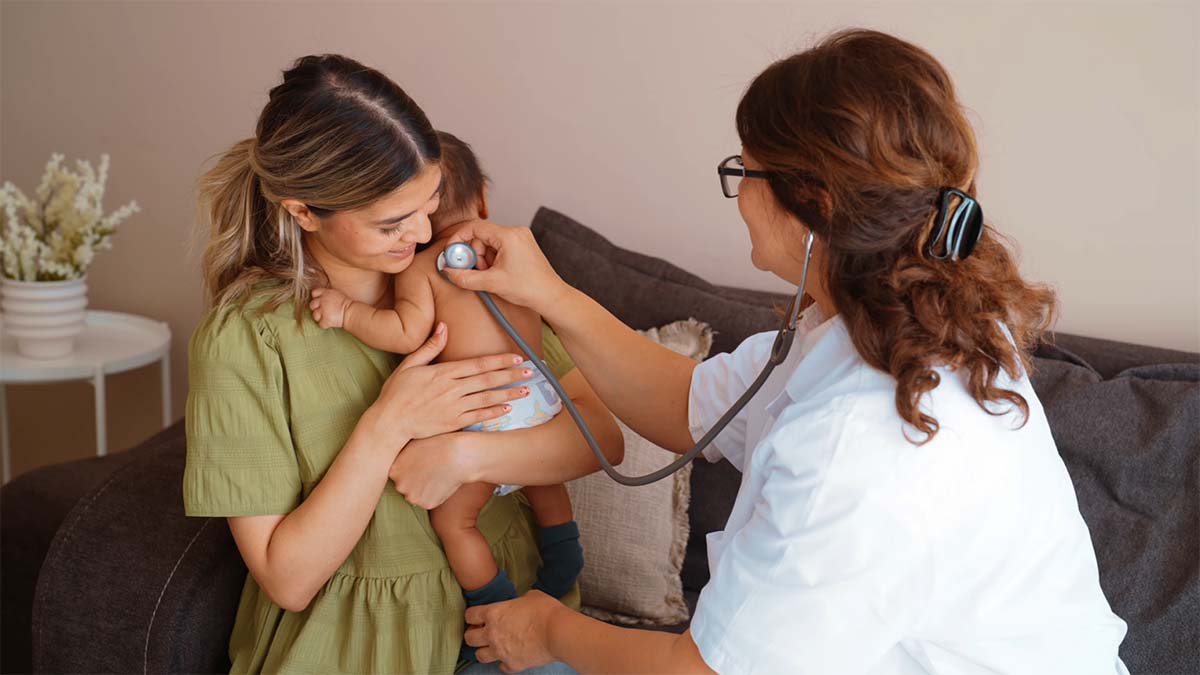As businesses increasingly use video to connect and scale, data security is a high priority, and choosing a secure video platform can be the difference between earning trust or losing business.
That’s where SOC 2 comes in. If your organization handles customer data, understanding SOC 2 compliance is necessary. In this guide, we’ll explain what SOC 2 is, who needs it, and how Vimeo helps you confidently meet the requirements.
Securely upload to Vimeo →
What’s SOC 2?
SOC 2, short for System and Organization Controls 2, is a cybersecurity framework developed by the American Institute of Certified Public Accountants (AICPA). It evaluates how well service providers manage customer data across five principles: security, availability, processing integrity, confidentiality, and privacy.
An SOC 2 report isn’t a government-issued certification. It’s an audit conducted by an independent Certified Public Accountant (CPA) to assess whether a company’s internal controls are appropriately designed and working effectively to safeguard information. Achieving SOC 2 certification demonstrates a company’s commitment to high security and operational transparency standards.
For cloud-based businesses that manage sensitive customer data — including video platforms, SaaS providers, and digital service organizations — SOC 2 compliance can be key to winning contracts and passing vendor assessments.
The 5 Trust Services Criteria (TSC) for SOC 2 compliance
SOC 2 compliance is based on a framework known as the Trust Services Criteria (TSC) developed by the AICPA. These criteria form the foundation of SOC requirements for any business that handles customer data. Understanding these principles is essential for companies looking to evaluate risk, build secure systems, and deliver consistent customer performance.
For video platforms, aligning with the five TSC means ensuring proper video content handling throughout its lifecycle. Here's a breakdown of each criterion and how it applies in practice.
Security
Security measures include protecting systems from unauthorized access and data breaches using security controls like encryption, firewalls, and multi-factor authentication. Vimeo supports this goal with tools like password-protected videos, private links, domain-level privacy, and SSO integrations.
Check out Vimeo’s Help Center article on SOC 2 security →
Availability
Availability means ensuring systems are accessible and reliable. Vimeo’s global proactive monitoring and enterprise support guarantee videos are always ready for your audience.
Processing integrity
Processing integrity involves confirming that systems function as intended without errors or corruption. Vimeo’s infrastructure maintains video fidelity and reliable playback — what you upload is what your audience experiences.
Confidentiality
Confidentiality focuses on safeguarding restricted information. Vimeo’s privacy settings, advanced access controls, and expiration links help protect sensitive content.
Privacy
Privacy means ensuring data is collected, used, and stored according to company policies and applicable laws. Vimeo supports this through opt-in analytics, customizable cookies, data residency for regional privacy laws, and compliance with GDPR and CCPA. These features can be especially helpful for technology and financial services organizations. For healthcare and other regulated industries, Vimeo also supports HIPAA-compliant video sharing.
What’s a SOC 2 audit?
An SOC 2 audit is an in-depth evaluation conducted by an independent, certified auditor to assess how effectively a service organization protects customer data. The audit examines the design and operation of internal controls related to the TSC, specifically security, availability, confidentiality, processing integrity, and privacy.
During the audit process, the auditor reviews documentation, tests controls, and may observe day-to-day operations to make sure policies and procedures are in place and functioning as intended. The audit can result in either a Type I or Type II report. A Type I audit evaluates the design of controls at a specific point in time. In contrast, a Type II audit assesses the operating effectiveness of those controls over a period — typically several months.
Organizations navigating HIPAA and other regulatory standards can pair SOC 2 efforts with broader data protection strategies. A favorable SOC 2 audit report signals to customers, partners, and procurement teams that a business takes data protection seriously. It demonstrates that the organization has well-defined internal controls, follows best practices, and is committed to maintaining operational transparency.
For a video platform like Vimeo, passing an SOC 2 audit reinforces trust with enterprise clients and security-conscious organizations. It confirms that Vimeo not only protects video content through advanced privacy settings and secure infrastructure but also operates with a proven internal governance and risk management framework. That peace of mind matters when your content strategy depends on a secure and reliable platform.
Comparing the two reports: SOC 2 Type II vs. Type I
When a company undergoes an SOC 2 audit, it can receive one of two types of SOC reports: Type I or Type II. Both are based on the same TSC but differ in scope, duration, and depth of evaluation.
An SOC 2 Type I report focuses on the design of internal controls at a specific point in time. This type of report is often ideal for startups or companies early in their compliance journey, offering a snapshot that proves initial readiness.
An SOC 2 Type II report evaluates whether controls are properly designed and whether they’re operating effectively over a defined period, typically between three and twelve months. Type II reports provide stronger assurance and are generally preferred by larger organizations like enterprises, financial institutions, and educational organizations.
Key differences between Type I and Type II SOC reports
Scope
- Type I: Evaluates the design of controls
- Type II: Evaluates design and operational effectiveness of controls over time
Audit duration
- Type I: Single point in time
- Type II: Extended monitoring period (often 3–12 months)
Cost and complexity
- Type I: Lower cost, shorter timeline
- Type II: Higher cost, more comprehensive process
Who it’s for
- Type I: Startups, early-stage companies, or businesses with limited customer pressure
- Type II: Mature organizations, companies scaling to enterprise customers, or those with strict procurement standards
For a video platform like Vimeo, maintaining an SOC 2 Type II report offers a high level of reassurance to clients prioritizing continuous data security and compliance. Whether it’s a global brand managing confidential training footage or a university distributing online course material, these customers expect platforms to demonstrate operational rigor.
Securely upload your videos to Vimeo →
Frequently asked questions
Is SOC 2 the same as ISO 27001?
No. SOC 2 is based on the TSC developed by the AICPA and is widely used in North America. ISO 27001 is an international standard focused on building and managing an information security management system. Both frameworks support strong security but serve different markets and use cases.
Can any CPA perform an SOC 2 audit?
No. Only licensed CPAs or accounting firms associated with the AICPA can perform SOC 2 audits. Many work alongside IT and security consultants to complete the technical portions of the audit process.
How do I become an SOC 2 auditor?
To become an SOC 2 auditor, you must be a licensed CPA or work under the supervision of one at an authorized firm. Additionally, you need expertise in IT systems, risk management, and security controls. To enhance their qualifications, many auditors also obtain relevant certifications, such as Certified Information Systems Auditor (CISA) or Certified Information Security Manager (CISM).
How does Vimeo's SOC 2 report fit into our platform’s overall approach to security?
These policies and procedures ensure ongoing monitoring to maintain security across our organization. Vimeo conducts ongoing reviews of products, features, and our development policies and procedures. At Vimeo, we want to ensure our approach to security is like anything else we do — iterative and collaborative. Vimeo is developing a world-class security program and has allowed for successful completion of the SOC 2 Type 2 Report.
Simplify SOC 2 compliance management with Vimeo Enterprise
Becoming SOC 2 compliant is easier when your video platform is built with security and privacy in mind. Vimeo Enterprise offers tools designed to support compliance initiatives across high-security industries.
Key features include:
- Advanced access control: Manage who can view or manage content
- Audit logs: Monitor when users and admins change permissions and video meta data
- Domain-level privacy: Restrict playback to approved websites
- Password protection: Secure individual videos with custom access
- SSO integration: Streamline user authentication and reduce risk
- Custom embed settings: Maintain control over how videos appear across platforms
Vimeo also gives users access to Vimeo Central, a secure space for teams to manage content and workflows, ideal for organizations prioritizing content control and collaboration. Vimeo Central helps organizations align with SOC 2 compliance goals by protecting sensitive video content while offering a reliable and user-friendly experience. Whether you're sharing internal training or delivering customer-facing media, Vimeo makes it easier to stay compliant.


